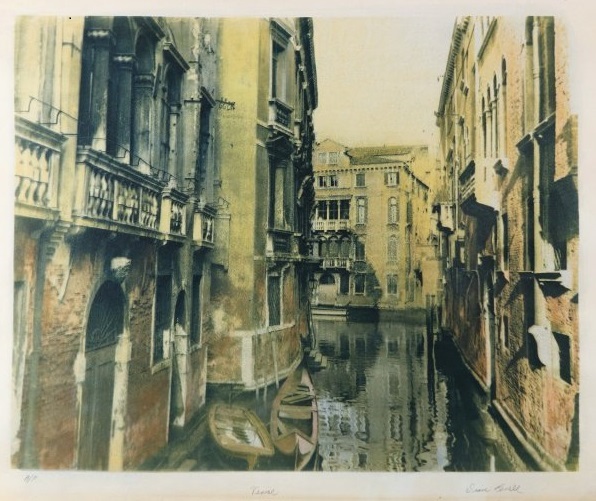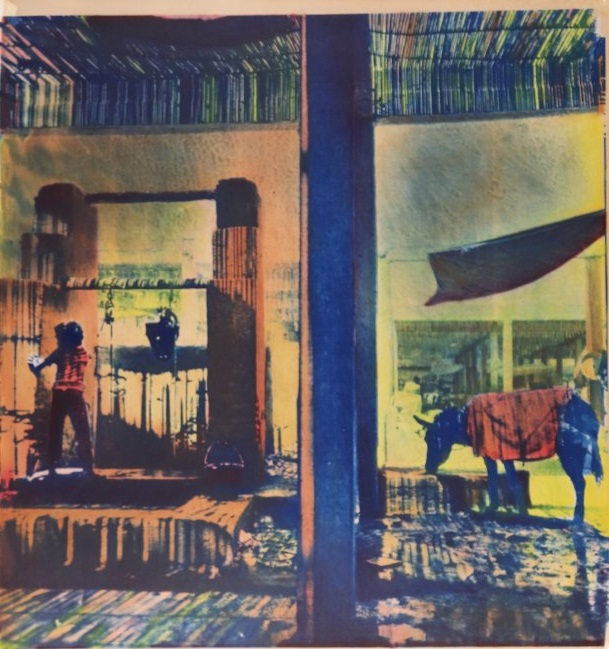Diane Levell was born in Philadelphia and still lives and works in the region. She received her B.A. from the University of Delaware in 1970 and an M.F.A. from George Washington University. Early in her career she had a particular interest in nude figure studies. As part of her work as a practitioner of complex techniques such as gum bichromate, cyanotype, photogravure, and Van Dyke brown printing, she has also conducted research on these historic processes. Her graduate thesis investigated the intricacies of photogravure. Throughout her long career, Levell has travelled extensively and much of her subject matter reflects these international experiences. She has also broadly documented the landscapes of the Brandywine and Bucks County regions.
Upon first glance, Diane Levell’s intricately crafted photographs might look like watercolors or paintings. The soft, dissolving edges of forms and the manipulation of color and tone were effects made using elaborate and historic printing processes. Her technical and aesthetic choices in a print such as Venice, seen above, show this contemporary artist following and expanding on the traditions of Pictorialist photographers from over a century ago.
Diane Levell's use of labor-intensive historic printing methods are the opposite of the instantaneity inherent in many forms of contemporary digital photography, which often do not involve printing at all. These two variations of the same image in Moroccan Well, to the left, demonstrate the wide range of aesthetic effects possible with photography. Each of these prints is a monoprint – or a unique example of the image. Levell not only produced each one using complicated printing methods, but also added hand coloring to each final print. The idea of making unique prints and adding hand touches to a form of art that is usually inherently reproductive is a fascinating paradox that earlier generations of Pictorialists sometimes explored as well. The idea of showing how one image might look using different photographic printing processes also reflects the practices of much earlier Pictorialists such as Gertrude Käsebier.




